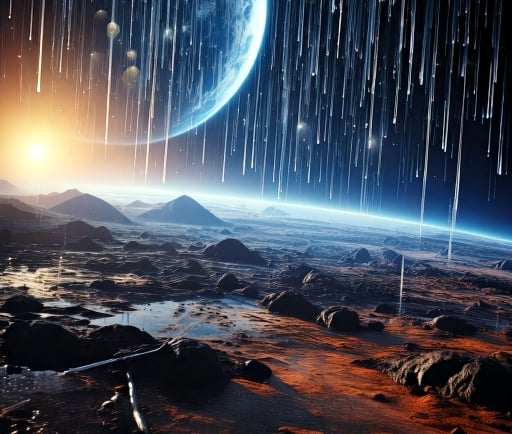The Raining Glass Phenomena of HD 189733b


Introduction to HD 189733b
HD 189733b is one of the most fascinating exoplanets discovered to date, located approximately 64 light-years away from Earth in the constellation Vulpecula. This gas giant, classified as a 'hot Jupiter,' exhibits extreme conditions that are unlike anything found on our home planet. Among its many unique weather phenomena, the most striking are the molten glass rains and the powerful winds that shape this alien world.
Molten Glass Rains: A Breathtaking Encounter
One of the defining characteristics of HD 189733b's atmosphere is its molten glass rains. At temperatures soaring over 1,000 degrees Celsius (about 1,800 degrees Fahrenheit), the conditions are incredibly hostile. The high temperatures cause silicate particles in the atmosphere to condense into liquid form. As these particles are propelled down towards the planet's surface by the intense winds, they solidify into glass, creating a phenomenon that is both mesmerizing and perilous.
The concept of rain on HD 189733b is drastically different from what we experience on Earth. Instead of water droplets falling gently from clouds, the rains of HD 189733b would feel more akin to a sandblasting experience. The shards of glass, propelled at high speeds, would create an inhospitable environment where nothing can survive. These extreme conditions raise essential questions about the potential for life beyond our planet, as organisms as we understand them would likely not withstand such an onslaught.
The Mighty Winds of HD 189733b
Adding to the planet's dramatic atmosphere are the winds that sweep across its surface, moving at incredible speeds of around 5,600 miles per hour (9,000 kilometers per hour). These winds are a reaction to the planet's close proximity to its parent star, along with its rapid rotation. Such velocities surpass anything achievable by wind on Earth, leading to a turbulent environment where the atmosphere is continually in motion.
These winds play a significant role in shaping the planet's climate, pushing the molten glass rains through the sky at almost supersonic speeds. The interaction between the intense heat of the atmosphere and such powerful winds creates a dynamic that challenges contemporary understanding of planetary atmospheres. Researchers are particularly interested in how these conditions might inform us about other exoplanets and their potential for habitability.
Conclusion: The Alien World of HD 189733b
In conclusion, HD 189733b serves as a stark reminder of the diversity of planetary systems beyond our own. With its molten glass rains and ferocious winds, this exoplanet offers insights into the nature of atmospheric dynamics on massive gas giants. As scientists continue to study HD 189733b and similar exoplanets, we may unlock new truths about the universe and what it holds for us. Moreover, understanding these extreme conditions could provide critical context when searching for habitable worlds, expanding our knowledge of the cosmos.
